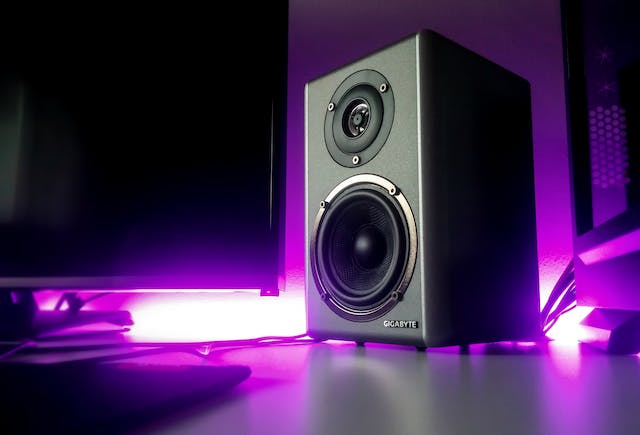
How do noise cancelling headphones work? They play the sound from around you, but reversed, which cancels out the noise.
Sound is a pressure wave that is created by an energy source that makes the molecules of the medium it is travelling through vibrate. Sound can travel through any medium and it travels through some faster than others. We are going to look at noise cancelling headphones, so let’s look at sound moving through air. Take a dog barking, for example. In order to bark, the dog lowers its diaphragm to create negative pressure in the abdomen, which pulls air into the lungs. The dog squeezes its muscles to force the air out over its vocal cords, creating the bark. The more energy the dog can put into forcing the air out, the louder the dark will be, which is why larger dogs are louder than smaller dogs. The energy from the dog’s muscles goes out into the air and hits the air molecules that are closest. These molecules start to vibrate and they move more, getting closer to the next molecules. When they come into contact with these molecules, they pass the energy on and those molecules vibrate and pass the energy on again. When the molecules come together, they create an area of high pressure and the space they have vacated, they create an area of low pressure. Once the energy has passed through them, they return to their original location, equalizing the pressure. Each time the sound energy goes through molecules, it loses a little bit of energy, which is why the sound fades with distance.
The energy travels through the air in a wave. Just as with the sea, the individual molecules don’t move along on the wave, they just move up and down as the energy in the wave moves through them. The more energy the wave has, the higher the peaks of the wave and the lower the troughs of the wave will be. This is called the amplitude of the wave. As the wave loses energy with distance, the amplitude gets smaller and smaller until we can’t detect it. Waves also have a frequency, which is the amount of times the wave passes through a given point per second. Sound waves with a high frequency pass through a point many more times than low frequency waves. We hear high and low frequency waves differently, as high and low pitch. High frequency waves pass through a point more often than low frequency, but the energy is still passed on at the same speed as low frequency waves, which is the speed of sound.
So, how do noise cancelling headphones work? If you are sitting on a bench while waiting for a bus, there are lots of different sounds that are reaching your ears. If you are trying to listen to music with headphones at the same time, you will need to turn up the volume on the headphones so that you can hear your music over the background sounds. This is because all of the sounds around you are travelling through your headphones, mixing with the soundwaves from your music and travelling into your ears. Noise cancelling headphones use something called phase inversion to cut out all of the background noise.
Phase inversion uses two sound waves to cancel each other out. It might be helpful to think about the sea. If you have a wave in the sea and you add another wave of exactly the same amplitude and frequency, you are going to double the power of the first wave, making it even bigger and more powerful. However, if you stagger the second wave so it is exactly between the peaks of the first wave, something magical happens. Because of the stagger, the high pressure peaks of the first wave cancel out the low pressure troughs of the second wave and the low pressure troughs of the first wave cancel out the high pressure peaks of the second wave. All you are left with is a very flat wave, which, with the sea, means it is very calm. When you do this with soundwaves, the sound becomes almost inaudible. It can be easily done by reversing one of the two waves.
Noise cancelling headphones have mics in them that constantly monitor all of the background sound around you. They have electronics inside them that instantly reverse the sound wave the mic has heard and play it at the same time. The two waves cancel each other out and you can’t hear anything. If a bus goes past, for example, the sound wave from the bus will come in through your headphones naturally. At the same time the mic will record that sound, reverse it, and play it through the headphones. The two waves will cancel each other out and you won’t hear the bus. You will only be able to hear your music.
Noise cancelling headphones are not perfect and they work best with sound that is constant because it is easier to reverse it. If there are a lot of mixed frequencies and amplitudes, it gets a little more difficult. And this is what I learned today.
Photo by Marinko Krsmanovic: https://www.pexels.com/photo/black-speaker-close-up-photography-2651794/
Sources
https://www.soundguys.com/how-noise-cancelling-headphones-work-12380/
https://www.sony.co.uk/electronics/support/articles/00203389
https://justenergy.com/blog/sound-energy-everything-you-need-to-know/
https://www.cs.toronto.edu/~gpenn/csc401/soundASR.pdf
https://en.wikipedia.org/wiki/Sound#Waves
